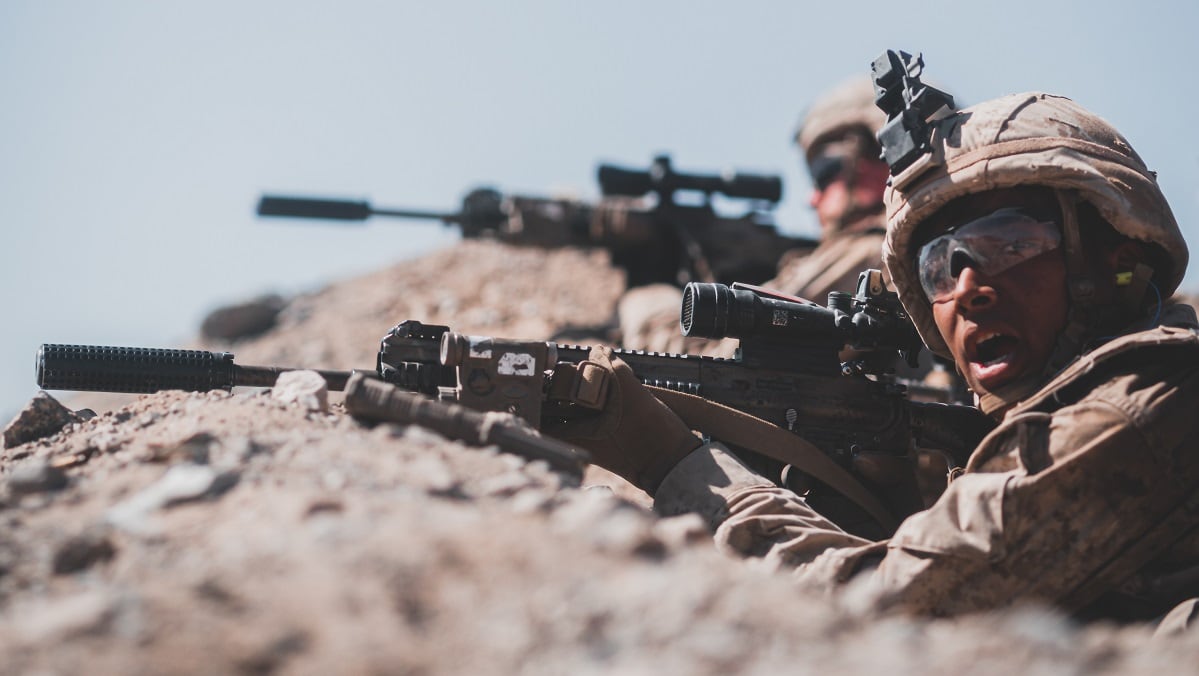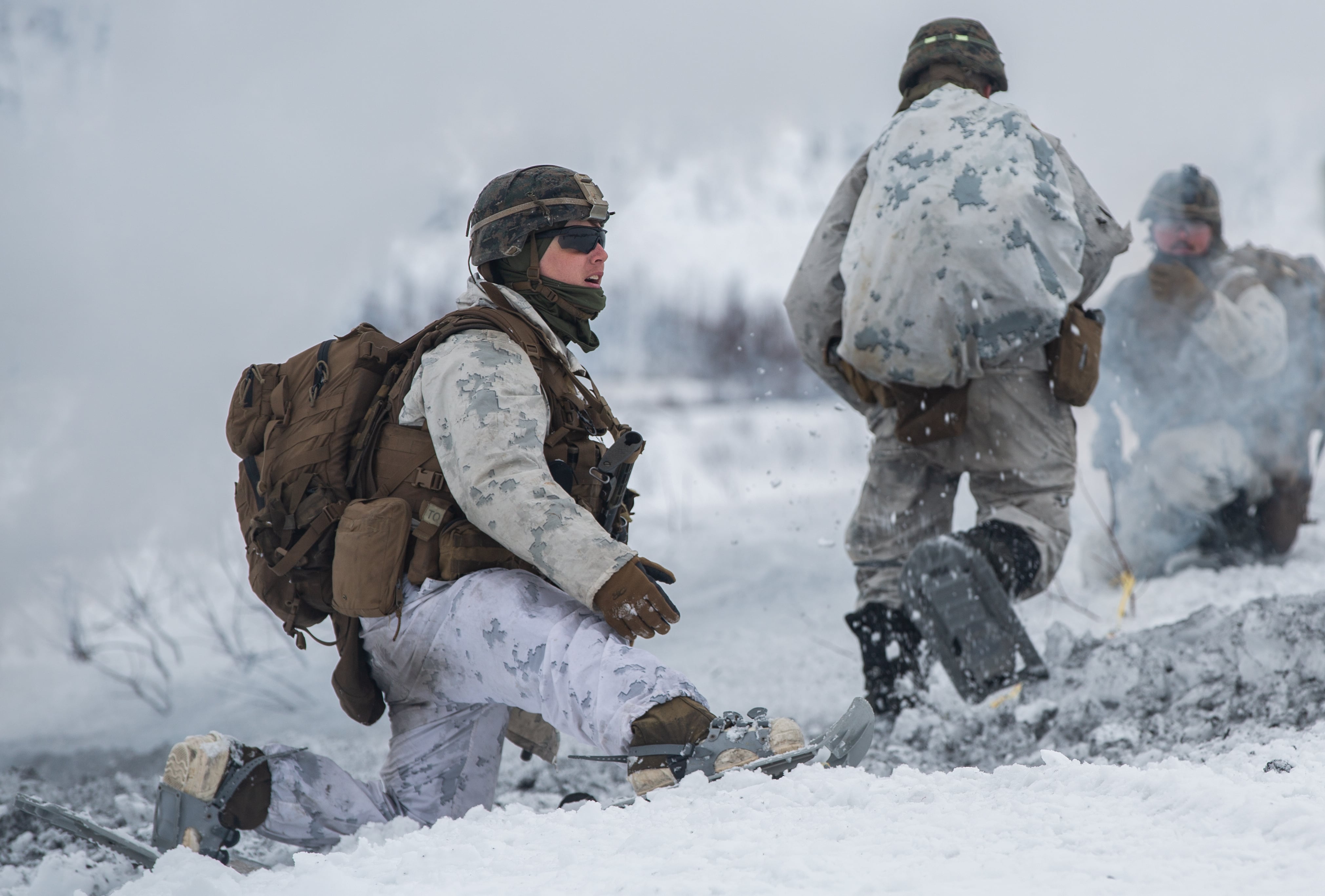For nearly three weeks in March, Marines with 3rd Battalion, 6th Marines, put the phrase Marines fight in “every clime and place” to the test, battling the Norwegian late-winter snows alongside a notional near-peer threat.
The Camp Lejeune, North Carolina, Marines worked with Norwegian counterparts as part of the 20-day campaign, experimenting with the Corps’ new strategy to face off against a near-peer in the arctic climate of the far north.
Though China has been the main focus in the Marine Corps’ force design changes, the Corps also is keeping an eye on Russia and a potential fight in the frozen north — far away from the warm waters of the South China Sea.
The operation in Norway gave the Corps an opportunity to build relations with an ally that will be key in any fight with Russia. It also gave them an opportunity to see how their littoral strategy fits in the Arctic Circle and what adjustments may need to be made for a northern fight.
RELATED

Observing enemy movement
The early stages of the exercise saw Marines take key positions that allowed them to observe any enemy movement.
It allowed the infantry Marines to take bring an international flair to Marine Corps Commandant Gen. David Berger’s vision of a greater naval integration.
While observing the enemy, Marines with the battalion’s light-armored reconnaissance company communicated with a Norwegian submarine, allowing it to move through the battlefield undetected by the notional enemy forces.
“Because of the terrain, the tactical scenario placed the Norwegian submarine in a position of vulnerability,” Capt. Joe Tortorici, the light-armored reconnaissance commander, said in a press release.
“Our ability to do that in the future will ultimately enable us to integrate directly with naval assets, as we have done in this exercise with the Norwegian submarine and support larger naval campaigns,” he added.
Battalion Commander Lt. Col. Ryan Gordinier told Marine Corps Times in a phone interview, “In this littoral terrain, specifically the Arctic, there are some considerations with mobility.”
The difference between off-road and on-road travel in the desert may only amount to a few kilometers an hour, the commander said. The difference between off-road and on-road transportation in the deep Norwegian snows may be measured in weeks, significantly changing how a campaign can be planned.
The commander said he learned a lot about “tactical patience” from the Norwegians, who were more familiar with their county’s climate and how much of a limiting factor it plays.
The cold and snow affected every level of the exercise.
Marines were forced to use snowmobiles, snowshoes and spent pretty much the entire three-week exercise wearing gloves to avoid frostbite.
“Very rarely did we ever do anything bare skinned because of how quickly you could get frostbite,” Gordinier said.
The arctic winter also forced the Marines to become extremely proficient with night vision goggles, the commander said.
When the exercise kicked off, the Marines would only have a couple of hours of daylight.
If a war were to break out in the region earlier in the winter the Marines may have been operating for days or weeks without any sun.
Developing the future infantry
The exercise culminated with the infantry Marines assaulting an isolated integrated air-defense system used by the notional enemy.
Three platoons moved through a valley against that enemy.
Two platoons flanked the enemy while the center platoon held fast, Gordinier said.
Once the two platoons were in position, the center launched the main assault.
The Marines faced off against a notional tank before taking out the integrated air-defense systems that was threatening the airport the Marines were securing.
The exercise is one of the many experiments the Corps will be running over the next several years as it puts the strategies it is developing to combat a near-peer to the test.
In addition to experimenting on the commandant’s vision in different climates around the globe, the Corps has launched an experiment that will decide the future internal organization of Marine Corps infantry battalions.
The Corps is considering using an “arms room” concept that will get rid of the weapons company in an infantry battalion, moving those capabilities down to the rifle companies.
Gordinier said this Norwegian exercise gave him and his Marines the chance to “think through the lens” Berger has given them and continue to develop the future infantry force.









